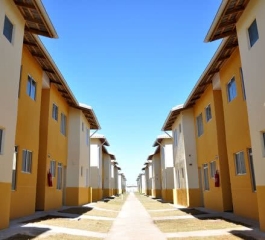In this article you will have access to the best and main information related to the timeframe, as well as you will be able to understand its consequences and how it directly affects the country’s indigenous people. Check it out!
What is the time frame of indigenous lands?
In the context of Brazil, the Temporal Framework of Indigenous Territories has generated debates and controversies about the demarcation of traditional indigenous lands.
This legal interpretation holds that only lands occupied by indigenous peoples up to a specific date, the “marco temporal”, are entitled to demarcation.
According to this proposal, the interpretation maintains that only the lands that indigenous peoples already effectively occupied on the established date, generally fixed in the enactment of the 1988 Constitution.
They would be considered as traditionally occupied, thus guaranteeing the right to demarcation. Areas occupied after this timeframe would not be eligible for recognition as indigenous lands.
Indigenous organizations and their advocates reject the time frame.
They allege that it violates their fundamental rights and weakens the protection of traditional lands, in addition to ignoring the historic evictions they have suffered.
How does it affect indigenous peoples?
The timeframe restricts the demarcation of traditional indigenous lands. This interpretation affects indigenous people significantly.
For many of them were expelled from their lands historically, but they were not regularized on the date of the milestone. Therefore, they cannot prove their occupation and lose the right to recognition of these lands.
Indigenous people see this measure as a threat to their ancestral territorial rights, as they depend on traditional lands to preserve their cultures, traditions and ways of life.
In addition, the lack of legal recognition of indigenous lands increases the vulnerability of these communities, leaving them subject to invasions, land grabbing and illegal exploitation of natural resources.
Indigenous peoples consider the timeframe as a measure that weakens the protection of their territories and rights, putting their cultural, social and environmental integrity at risk.
For this reason, many indigenous leaders and organizations fight against this legal interpretation, seeking to guarantee the recognition of their traditional lands and respect for their ancestral rights.
Timeframe Consequences
Teeth the main consequences caused by the time frame, we can mention:
1.Restriction of recognition of indigenous lands:
The demarcation of indigenous lands may be limited by the interpretation of the time frame.
This interpretation can prevent the recognition of lands that indigenous peoples historically occupied, but that were not regularized on the date of the milestone.
This can deny their ancestral territorial rights and cause them to lose important territories for the preservation of their cultures and ways of life.
2.Increased vulnerability of indigenous communities:
Indigenous communities are more vulnerable without legal recognition of their lands. They suffer from invasions, land grabbing and illegal exploitation of natural resources.
In addition, they face conflicts and violations of their rights without the protection of their traditional lands.
3. Threat to the cultural and social integrity of indigenous people:
Indigenous communities may lose their cultural and social integrity with restrictions on land demarcation.
The land is essential for the maintenance of its ancestral traditions, customs and practices. Without this right, their cultural identities and values can be weakened.
4.Disrespect for ancestral rights:
Indigenous peoples have an essential part of their identity and history in the land. They occupy their territories historically long before the date established by the timeframe.
As a result, they see the timeframe as disrespecting their ancestral rights to their land.
5.Conflicts and social tensions:
The time frame generates conflicts and social tensions between indigenous peoples, their communities and other social actors.
These actors include rural landowners and economic sectors that want to expand their activities on traditional lands.
Conclusion
In short, the time frame has significant consequences for indigenous peoples, threatening their ancestral land rights and increasing their vulnerability to conflict and illegal exploitation of natural resources.
This compromises their cultural and social integrity, generating social tensions. For indigenous communities, fighting the time frame is preserving their identity, culture and ways of life.
It is therefore essential to find solutions that guarantee respect for their ancestral rights and the protection of their traditional lands.
Seeking a fairer and more inclusive society, where they can live in harmony with their environment and have their rights recognized and respected.








